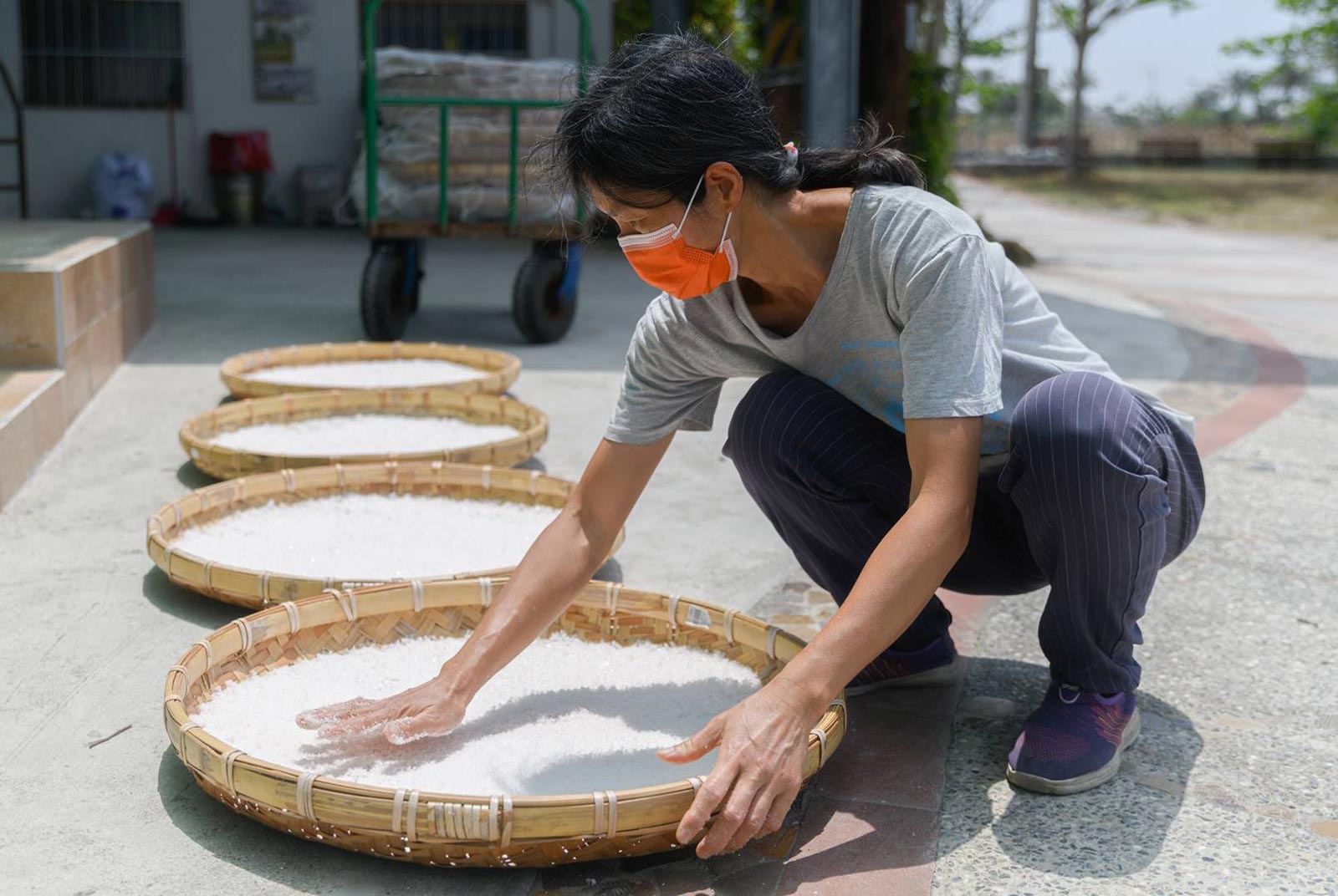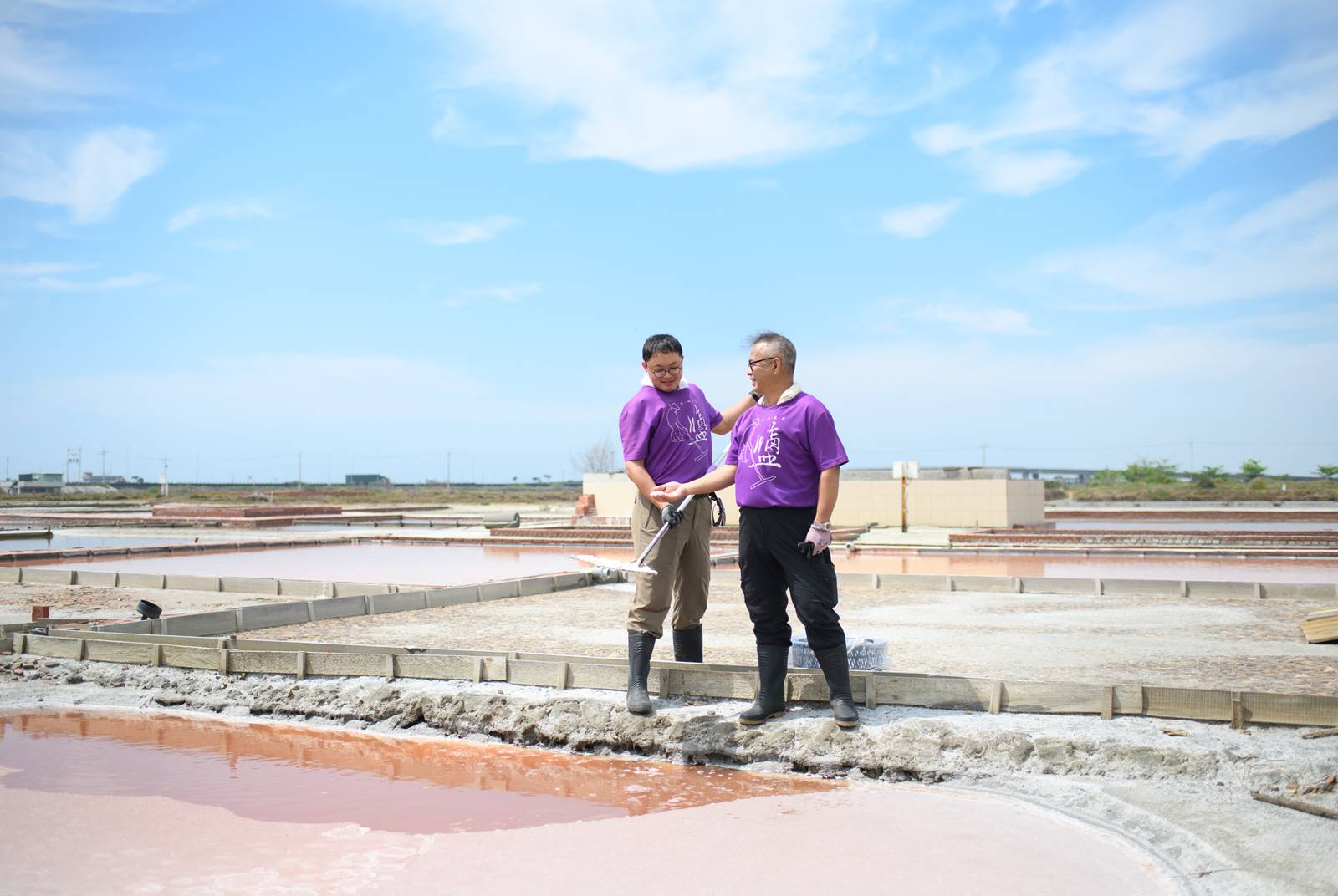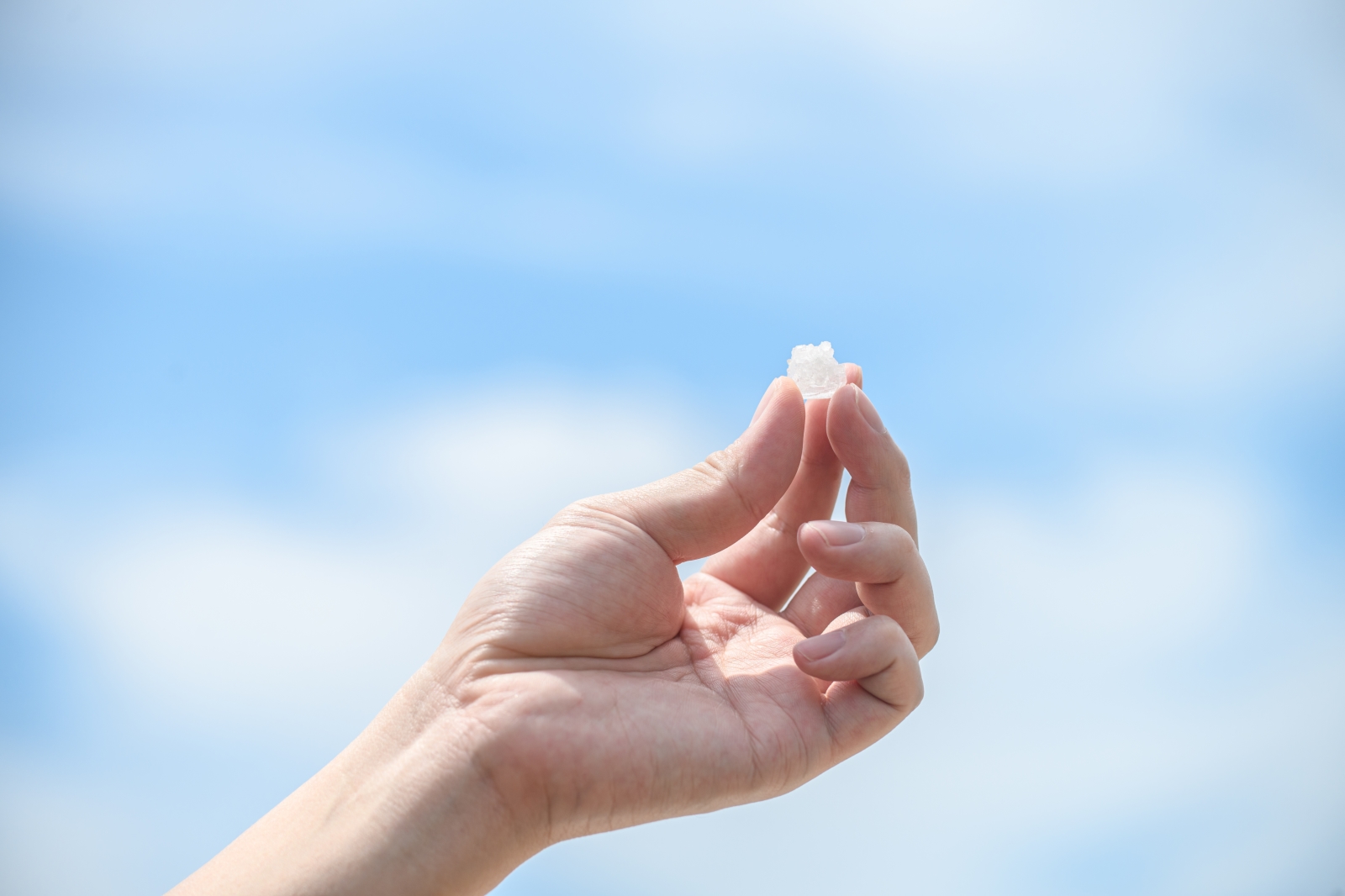Reviving Taiwan’s once thriving salt culture

Source:Pei-Yin Hsieh
Sun-dried salt was once a flourishing bedrock of coastal Chiayi County culture that eventually disappeared. But some of the area’s salt fields are being reborn. CommonWealth magazine takes a closer look at this revival, and the person behind it.
Views
Reviving Taiwan’s once thriving salt culture
By Kai-yuan TengFrom CommonWealth Magazine (vol. 775 )
The Zhou Nan Salt Field lies just 2 kilometers from the Chiayi County coast in Budai Township, yet it seems isolated. Surrounded by wasteland with a smattering of weeds, the field can go many hours without seeing people or cars pass by.
This desolate area was once an extremely valuable salt hub that needed to be patrolled and protected by police. Today, only the Zhou Nan Salt Field, occupying fewer than three hectares of land, is still harvesting salt.
Starting in the Qing Dynasty, the salt industry was an important income earner for the Budai economy. In the second half of the 20th century, however, as labor costs rose and World Trade Organization rules opened the world to globalization, these massive salt fields were no longer economically viable and vanished.
That was not something the founder of Zhou Nan Salt Field, Tsai Jiung-chiau (蔡炅樵), was willing to live with.
When CommonWealth caught up with him, Tsai was in his pink salt field, scooping out the crystallized salt from the salt pools one by one
A long road back
Currently in his 50s, Tsai studied communications in college and returned to his hometown of Chiayi after graduating, working there for six years as a reporter. During his time on the job, he gained considerable exposure to local culture and eventually set up the Chiayi County Budai Cultural Association with some friends.
For many years, it published a journal that showcased Budai’s culture and development and shared the area’s collective memories.
Because of his passion for culture, Tsai studied cultural heritage conservation at National Yunlin University of Science and Technology and followed his professor around Taiwan, recording the locations of abandoned salt fields.
In 2008, he noticed that people in Tainan were trying to revive moribund salt fields, and he asked himself, “What else can I do, other than take photos?”
Embracing his interest in preserving cultural assets, Tsai rented the Zhou Nan Salt Field lot from the Chiayi County government, and tried using the ancient methods of salt production on his own.
He found it extraordinarily challenging, in part because of what the field had become.
“The land in the Zhao Nan Salt Field was neglected for many years, and the soil was no longer suitable for extracting salt,” he recalled.
To help him overcome these obstacles, he enlisted veteran salt workers to help, and he began in 2012 to pay their salaries with financial support from the Multiple Employment Promotion Program initiated by the Ministry of Economic Affairs (MOEA).
The project was a turning point for Tsai, who had always seen himself as a servant of culture and history.
“We started with the idea of preserving culture and history. We thought that using culture to make money was crass,” he said.
After Tsai applied for the MOEA plan’s subsidies, however, the government put pressure on him by holding the operation to key performance indicators. He quickly realized that if cultural workers only waxed nostalgically about the past without finding new relevance in the present, the salt field would not be truly preserved, and he started pondering different business models.
 Tsai Jiung-chiau (Right), a salt farmer who served high-end restaurants with Taiwan sun-dried salt. (Source: Pei-Yin Hsieh)
Tsai Jiung-chiau (Right), a salt farmer who served high-end restaurants with Taiwan sun-dried salt. (Source: Pei-Yin Hsieh)
Skeptical employees
Tsai knew that trying to sell the salt as a commodity and competing on quantity and price was a non-starter, but luckily for him, Taiwanese consumers have awakened in the past decade to the importance of food safety and supported local produce and small farmers.
He decided to forge the image of the Zhou Nan Salt Field through the narrative of the local salt industry’s history and build a brand around it, but even his employees had their doubts.
“The price for regular seasoned salt was NT$20 a kilo, but my most basic seasoned salt cost 25 times that,” Tsai said. “Even our employees were making fun of me.”
To test the market, Tsai decided to hook up with the Homemakers Union Consumer Cooperative, which specializes in working with small farms and organic produce.
Once it had a distribution channel in place, the Zhou Nan Salt Field took its biggest step to recognition when it teamed up with top chefs, including award winning bakers Chen Yao-hsun and Wu Pao-chun, and about 100 restaurants, such as Salt & Pepper Restaurant in Taichung.
‘On a par with imported French salt’
“The chefs would all share their experiences with the salt, and now when you mention Taiwanese sea salt, Zhou Nan is probably the best known,” said Salt & Pepper Restaurant head chef Huang Chia-wei (黃佳瑋).
Huang’s help was critical in giving Zhou Nan Salt Field an in with Taiwan’s chef community. In 2018, Tsai took advantage of introductions from Huang to host his first gathering of top chefs in Taichung to introduce the uses of Zhou Nan salt.
Huang said his customers were increasingly interested in local ingredients and would ask him if he used salt made in Taiwan, and that’s when he turned to Tsai and Zhou Nan Salt Field.
After testing the local salt several times, Huang felt it was on a par with imported French salt, and he used it to go with his steaks.
 Sun-dried salt has different flavors during each season.
Sun-dried salt has different flavors during each season.
Salt extracted and sun-dried at different times of the year yields different flavors. Tsai said that just like red wine, salt cultivated in different seasons and climates each have their own names, and restaurants are now taking advantage of that diversity.
One example is Robin’s Grill, a steakhouse at the Regent Taipei. It started using around a dozen kinds of locally harvested salts, including Zhou Nan Salt Field products, in May 2023.
Gary Lo (羅明威), executive assistant manager of Food & Beverages at the Regent, said Taiwan-made salt costs 10 times more than imported salt, but the hotel went for it anyway because of its excellent flavor and its representation of Taiwan’s salt culture, values consistent with those motivating the Regent to opt for local ingredients.
The secret to sustaining old industries
Today, Zhou Nan Salt Field turns a profit through its food distribution network, sales to head chefs of top restaurants, and revenue from 20,000-30,000 visitors a year to the facility, and no longer needs the government’s help to survive.
In his evolution from cultural preservation advocate to salt supplier for top chefs and restaurants, Tsai Jiung-chiau has come to realize that saving cultural assets from the past means repositioning them to fit today’s world.
As he said: “Cultural and historical preservation and community regeneration are important, but if you want old industries to survive, you have to help these assets find a way to resonate with contemporary society. Only then can they be sustained.”
Have you read?
- Exquisite Mooncakes of Master Baker Cause Craze in Taipei
- How can Taiwanese specialty coffee reach the international market?
Translated by Luke Sabatier
Uploaded by Ian Huang






